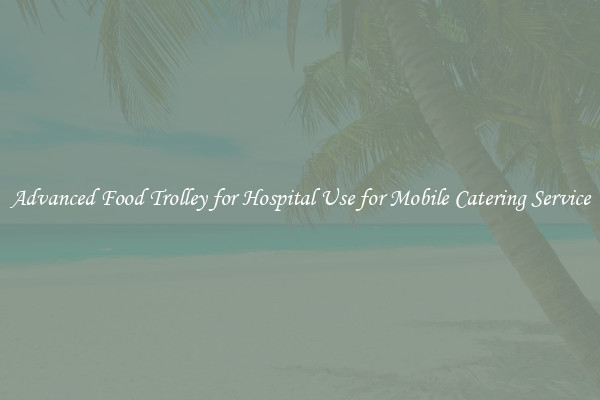Advanced Food Trolley for Hospital Use for Mobile Catering Service
As mobile catering services become increasingly popular, it is important for hospitals to keep up with the latest technology and equipment to ensure that patients and staff are provided with quality meals. One way hospitals can do this is by investing in advanced food trolleys specifically designed for hospital use.

These advanced food trolleys are equipped with innovative features that make meal service more efficient and convenient for hospital staff. For example, some trolleys come with built-in refrigeration units, allowing hot and cold items to be stored at the optimal temperature until they are ready to be served. This ensures that food is kept fresh and safe for consumption, reducing the risk of foodborne illness.
Another feature of advanced food trolleys is their ability to keep different types of food separate and organized. This is particularly useful in hospitals where patients may have dietary restrictions or allergies. By using specialized compartments and trays, hospital staff can easily identify and serve the appropriate meals to each patient, minimizing the risk of mistakes or cross-contamination.
In addition, some advanced food trolleys are designed with ergonomic features to improve the comfort and safety of hospital staff. For example, trolleys may be adjustable in height to accommodate different serving levels or have wheels that can be locked in place to prevent accidental movement. These small but important details can make a big difference in the efficiency of meal service and the overall experience for both staff and patients.
Overall, investing in advanced food trolleys for hospital use is a smart decision for mobile catering services. By incorporating the latest technology and features into meal service, hospitals can improve the quality of food they provide to patients and staff, while also increasing efficiency and reducing the risk of errors. With the right equipment in place, hospitals can ensure that meals are served promptly, safely, and with the utmost care.

View details

View details

View details

View details








